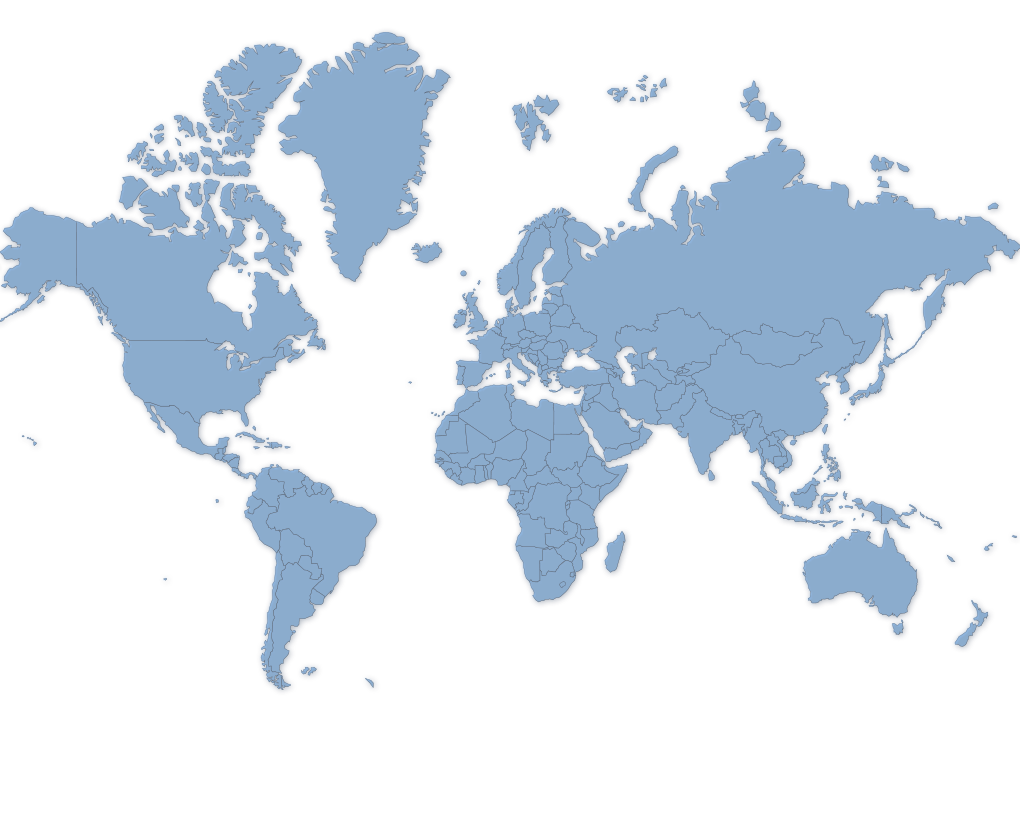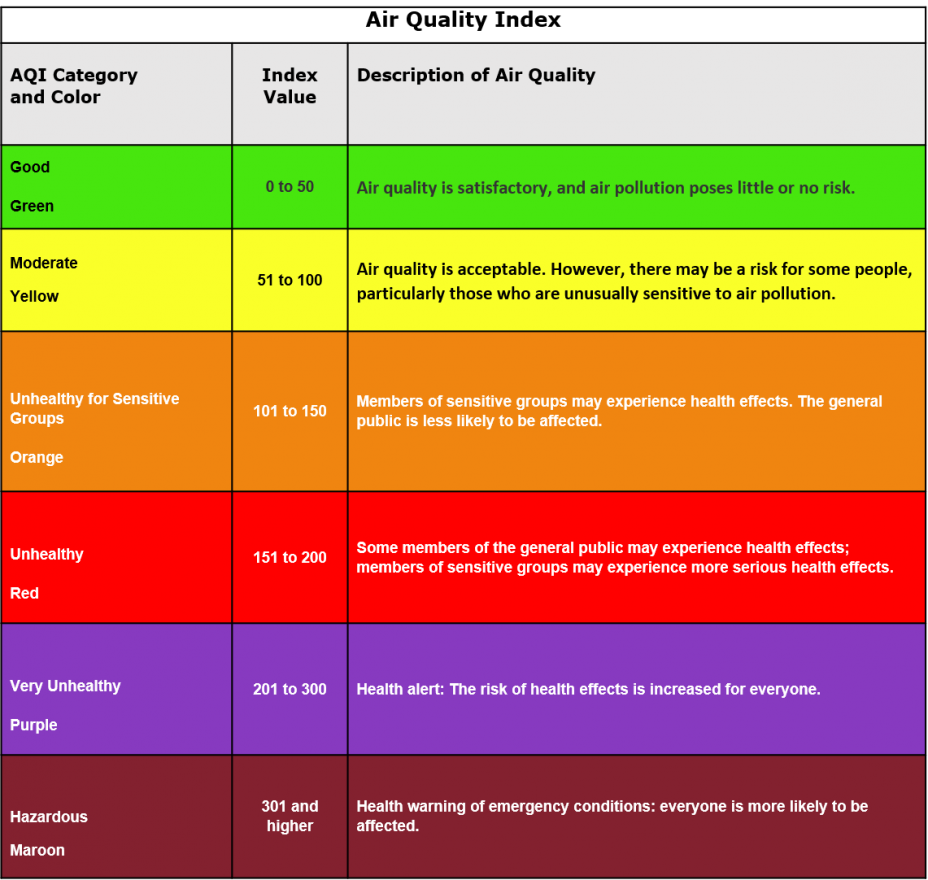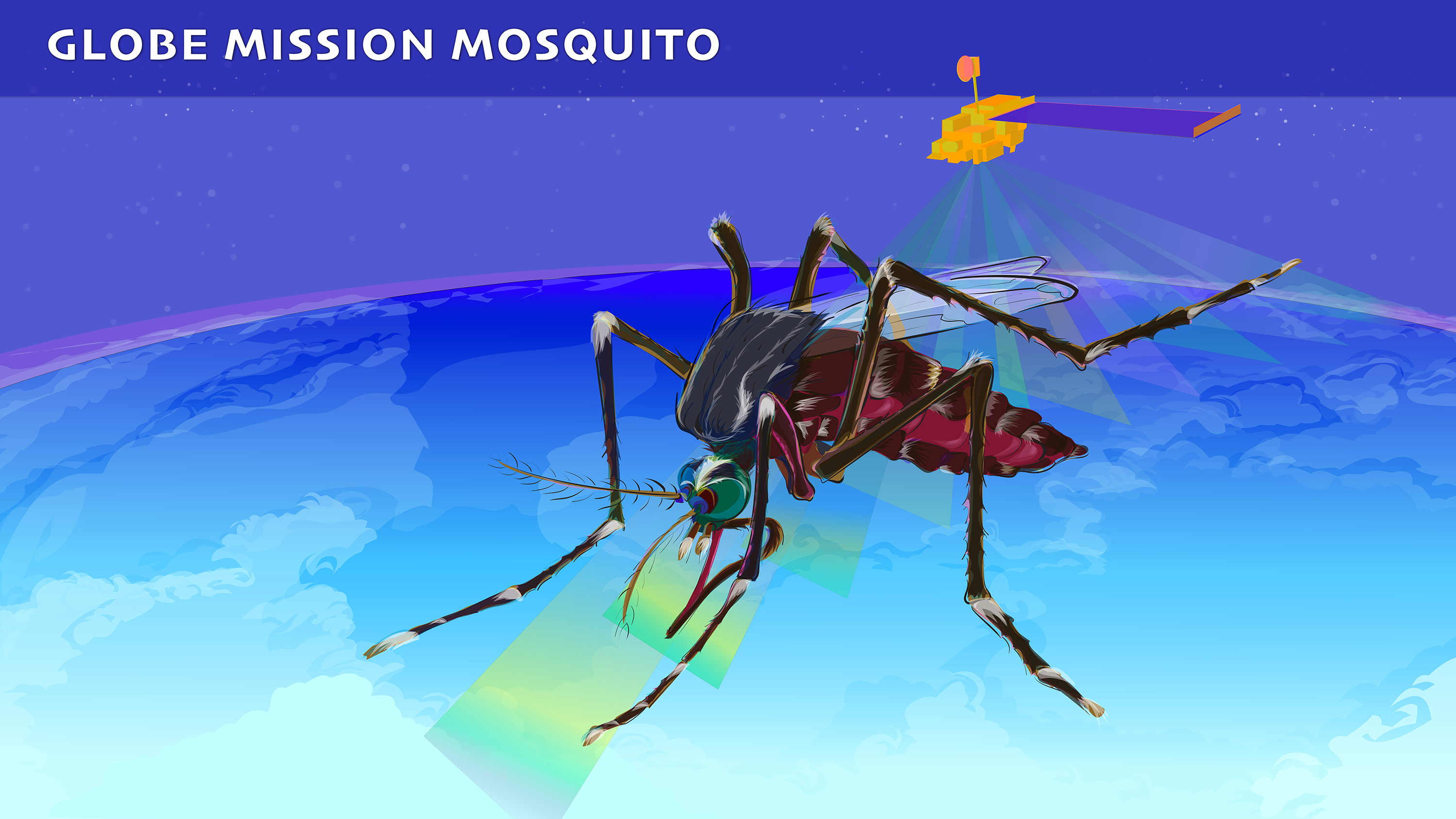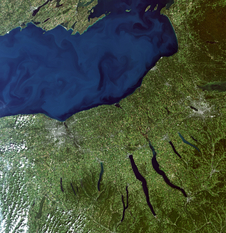GLOBE Connections
GLOBE Protocol Bundles & Related ESDE Datasets

For Earth as a System, My NASA Data features resources for GLOBE Protocol Bundles that provide connections to NASA datasets in the Earth System Data Explorer. For more information on GLOBE Earth as a System protocol bundles see the resources at the bottom of the page. It is important to note that a particular protocol bundle may support more than one phenomenon and may support phenomena from different spheres. To see how individual protocols or bundles relate to a particular My NASA Data topic, you can visit the GLOBE Connection for that topic (i.e., Systems and System Models, Flow of Energy and Matter, Scale, Proportion and Quantity, etc.) to find related datasets, background information for the protocols, student data sheets, and related learning activities.
Related Earth System Data Explorer datasets:
The datasets in My NASA Data's Earth System Data Explorer which supplement exploration of each protocol are also indicated. These supplemental datasets may measure the same variable or related variables, and they may have a different temporal scale. Specific research questions may also have additional supporting datasets which can be explored. All data available through My NASA Data can be found on the Data Collections: Earth System Data Explorer page.
Explore the MND GLOBE Connections Datasets spreadsheet to review the range of datasets in the Earth System Data Explorer.
The GLOBE protocol bundles related to phenomena or datasets supported by My NASA Data (MND) are outlined below. Under each bundle, there is a list of related Earth System Data Explorer datasets.
Protocol Bundles

Air Quality
Air quality (a measurement of the amount of pollution in the air) is affected by a number of factors. These factors can include the source of pollutants, the type of pollutants, and local climatological and weather conditions. This bundle help demonstrate the linkages between atmospheric phenomena, land cover use, and air quality.
ENSO
El Niño and La Niña are important climatic phenomenon that can have impacts on the climate globally causing flooding and droughts as well as changes in seasonal weather. These interactions around the world are called teleconnections. Considering the importance of this issue, a GLOBE ENSO (El Niño Southern Oscillation) Campaign has been formulated to engage students in determining where and how much El Niño affects local places and to put students in contact with the resulting patterns in their local environment. (Source: GLOBE ENSO Bundle)

Mosquito
According to the World Health Organization, more than 50% of the world’s population is at risk of contracting a mosquito-borne disease. Mosquitoes infect hundreds of millions of people with diseases such as yellow fever, malaria and dengue, and kill more than a million people each year.
By making observations and recording data using the GLOBE Program, GLOBE Observer App's Mosquito Habitat Mapper Tool, you can report information about the mosquitoes that you find locally and contribute to reducing the risk of disease outbreaks in your community. (Source: GLOBE Mosquito Bundle)
Ocean
Two thirds of Earth’s surface (70.9%) is covered by oceans (NOAA, 2018). Oceans are a vast source of food and raw materials recreation, transportation, and other functions of importance for human well-being (Halpern et al. 2012). As an example, 43% of services provided by the biosphere come from ocean ecosystems (Levrel et al. 2014), and one third of the world's population lives in coastal areas (Rao et al. 2015). Given the above, it is of critical importance to increase our knowledge about oceans and coastal ecosystems as well as to design and implement measures for their protection.
Oceans are complex ecosystems, which implies that their study needs to take into consideration several interrelated physical parameters, not to mention the mechanisms and processes which reflect the interaction between land and oceans along coastal zones as well as the interaction between the atmosphere and oceans. Furthermore, answering a research question related to oceans requires exploitation using a variety of methods and the integrated use of different measurements; the participation of students, teachers and scientists, facilitates the advancement towards a better understanding of the marine and coastal environments. (Source: GLOBE Ocean Bundle)
Rivers and Lakes
Freshwater is essential for our planet. It is vital for people and other living things around us. Freshwater environments include rivers, lakes, wetlands, streams and underground aquifers. They store and clean the water that's crucial for people and wildlife. Rivers and lakes in particular due to their greater water supply potential and easy access to human exploitation are facing greatest threat.
Rivers and lakes supply water for drinking, irrigation, manufacturing, energy and transport. They also help to prevent erosion, provide natural protection from flooding, moderate the local climate, and act as sink for the waste we dispose in rivers and lakes.
Water is recognized by the United Nations as a precondition for human existence and for sustainability of the planet, which guide us to undertake the responsibility to effectively manage this resource so as to avoid pollution and scarcity. In the last century, we have lost many of the world’s wetlands and their wildlife. The gravity of the problem is documented in the Living Planet Report of 2016. The report shows a decline of 80 percent in the Freshwater Living Planet Index which is two times the respective decline in oceans and forests. (Source; GLOBE Rivers and Lakes Bundle)
Soil
Soils are one of Earth’s essential natural resources yet they are often taken for granted. Most people do not realize that soils are a living, breathing world supporting nearly all terrestrial life. They hold nutrients and water for plants and animals; they filter and clean water that flows through soils. They also influence the amount of water that recharges the groundwater. The amount of water in soil is known as soil moisture and it plays a very important role in predicting the type of plants that will grow in a given area, the occurrence of floods or droughts, and in predicting the weather (soil moisture can play a large role in cloud formation).
Soils and their function within an ecosystem vary greatly from one location to another as a result of many factors, including differences in climate, animal and plant life, and the type and age of the soil.
The purpose of the Soil Bundle protocol is to provide greater knowledge on the relationship between soil characteristics and their function for different ecosystems. (Source: GLOBE Soil Bundle)
Urban
The urban environment is a reflection of urban dynamics, including the surface and atmosphere energy balance, the transfer of air masses and the resulting dispersion of air pollutants and the energy and heat fluxes in between the surface and the atmosphere close to the surface. It consists of non-homogeneous areas in terms of urban density, population density, land use/cover, greenery and cooling sinks, the intensity and spatial dispersion of anthropogenic heating sources, rain run-off features, and more.
In recent years, the urban environment is not simply considered as an agglomeration of buildings, but rather as a ‘living organism” that constantly changes mostly due to anthropogenic causes. Given this perspective, it is important to: (a) take note of individual and nested systems from the natural environment, the built environment and the socio-economic environment and (b) to define the physical, chemical and environmental processes, including their interactions, which influence and/or control the urban environment.
The purpose of the Urban Bundle is to suggest a group of GLOBE protocols that can provide students and teachers with integrated knowledge of the environment in urban areas, including various processes and their interactions. Given the many small-scale variations caused by the built environment, such citizen science contributions are particularly needed to adequately characterize the urban environment. (Source: GLOBE Urban Bundle)
Water Cycle
Water—the main reason for life on Earth—continuously circulates through one of Earth’s most powerful systems: the water cycle. Water flows endlessly between the ocean, atmosphere, and land. Earth’s water is a finite, fixed amount, meaning that the amount of water in, on, and above our planet does not increase or decrease.
NASA studies water in a variety of ways, using satellites, airborne campaigns, and ground-based measurements to collect data. These data are used for many real world applications to answer vital questions that are essential to our survival on this amazing “water planet”. The data that GLOBE scientists, teachers, and students collect are also vital and help us to become better informed and engaged stewards for the water in our environment. (Source: GLOBE Water Cycle Bundle)

Water Quality
Water—the main reason for life on Earth—continuously circulates through one of Earth’s most powerful systems: the water cycle. As water interacts with the atmosphere, soil and the surrounding land cover bordering water bodies, and the surface over which the water flows, the water quality changes. Human activity also affects water quality in major ways. Water quality determines what can live in the water body and how the water may be used.
Water quality in general cannot be measured using remote sensing, so the data that GLOBE scientists, teachers, and students collect are vital and help us to become better informed and engaged stewards for the water in our environment. By taking measurements following the protocols in this bundle the GLOBE community will learn about water in their local environment and can collaborate with others around the world. There is no end to what we can achieve through collaboration and cooperation! (Source: GLOBE Water Quality Bundle)
Weather
Weather, is the state of the atmosphere at a particular place during a short period of time. It reflects such atmospheric parameters as air temperature, air pressure, air humidity, precipitation (type and amount), clouds (type and cover) and winds (direction and speed). It is directly related to the energy budget of the place concerned and to this end is also a function of land cover which influences the amount of solar radiation absorbed or reflected by the ground and along with surface temperature the amount of thermal radiation that is emitted.
Weather is different in different parts of the world and changes over minutes, hours, days, and weeks. The majority of weather events take place in the troposphere, i.e. the part of Earth’s atmosphere that extends from the ground to roughly 8-15 km altitude.
It is important to (a) monitor the atmospheric parameters so as to predict or to explain changes in prevailing weather conditions; (b) understand the interdependencies of the various atmospheric parameters; (c) link the atmospheric parameters to the energy and water budget of the locale; and (d) understand the dynamics of the atmosphere in terms of cold/warm fronts, high/low pressure systems, cloud formation, etc. It is also important to understand the difference between weather and climate, even though both depend on many of the same atmospheric parameters.
The purpose of the Weather Bundle is to suggest a group of GLOBE protocols that can provide students and teachers with integrated knowledge of the parameters and processes which control weather and are responsible through their changes, for weather events. (Source: GLOBE Weather Bundle)
Additional Information on GLOBE Protocol Bundles
The GLOBE protocol bundles can be found on the GLOBE website.

